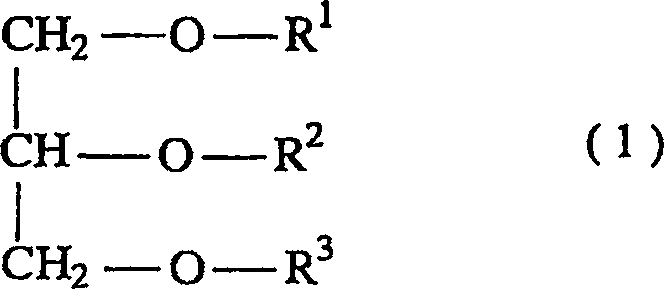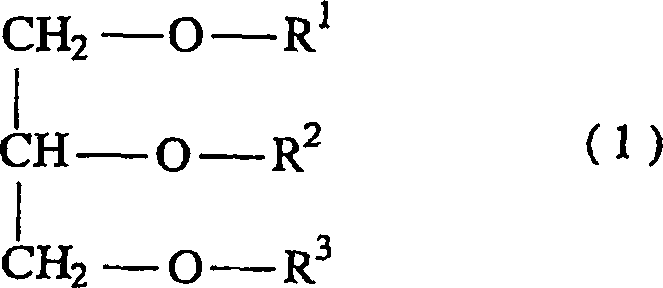Plasticizer for biodegradable resin
A biodegradable and plasticizer technology, applied in the field of plasticizers for biodegradable resins and biodegradable resin compositions, can solve problems such as insufficient flexibility, easy whitening, and inability to use
- Summary
- Abstract
- Description
- Claims
- Application Information
AI Technical Summary
Problems solved by technology
Method used
Image
Examples
Embodiment 1~2 and comparative example 1~3
[0051] As a biodegradable resin, 100 parts by weight of polylactic acid resin (trade name レイイシア (LACEA) H-400 produced by Mitsui Chemicals Co., Ltd.) obtained after vacuum drying at 50°C for 24 hours, and as shown in Table 1 The composition formed by 15 parts by weight of the plasticizer was kneaded for 10 minutes with a laboratory plasticizer (manufactured by Toyo Seiki Co., Ltd.) at 180°C, and then a press molding machine with a thickness of 0.5mm was produced using a press molding machine at 190°C. test piece.
[0052] The prepared test pieces were evaluated for volatility resistance, flexibility, transparency and bleed resistance by the following methods. The results are shown in Table 1.
[0053]
[0054] Using a differential calorimeter, the temperature of the plasticizer was raised from room temperature to 300° C. (5° C. / minute) in a nitrogen atmosphere, and the temperature at which the weight decreased by 10% was measured. The processing temperature of polylactic a...
PUM
| Property | Measurement | Unit |
|---|---|---|
| optical purity | aaaaa | aaaaa |
Abstract
Description
Claims
Application Information
 Login to View More
Login to View More - R&D
- Intellectual Property
- Life Sciences
- Materials
- Tech Scout
- Unparalleled Data Quality
- Higher Quality Content
- 60% Fewer Hallucinations
Browse by: Latest US Patents, China's latest patents, Technical Efficacy Thesaurus, Application Domain, Technology Topic, Popular Technical Reports.
© 2025 PatSnap. All rights reserved.Legal|Privacy policy|Modern Slavery Act Transparency Statement|Sitemap|About US| Contact US: help@patsnap.com


